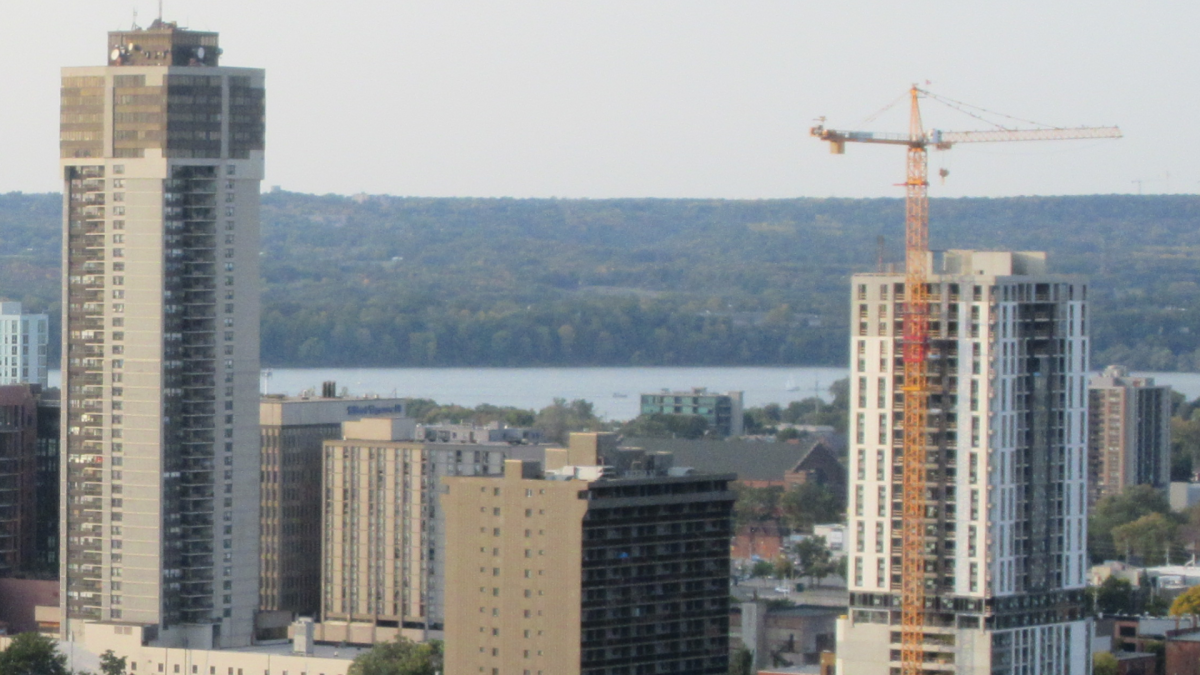The crown corporation that tracks property data in Ontario says condos across the province are getting smaller while detached homes are getting bigger.

The Municipal Property Assessment Corporation (MPAC), which also determines the assessed value for all Ontario properties, says between the mid-90’s and early 2020, the average condo has shrunk 35 per cent, moving from 1,100 square feet to just 700 square feet.
Hamilton is below the provincial average, with the median slipping 40 per cent over 25 years from 1,231 square feet to 744 square feet.
Greg Martino, MPAC’s vice-president and chief valuation and standards officer, told Global News an increase in land values across the province, particularly in areas with a strong demand for housing, is likely the primary reason for the trend.
“As those land values have increased, to make some of these projects economically feasible or viable, more units are being built on a single property or a single parcel of land,” Martino explained.
“This has meant that those individual units on those lands have gotten smaller.”
Of Ontario’s biggest real estate markets, Markham has seen the biggest shift, with units shrinking 45 per cent over 25 years.
Martino says Niagara, Halton and Brantford haven’t seen as acute a decline in square footage compared to Hamilton due to much less condo development and a history of already building smaller units.

Get daily National news
“Burlington and Oakville, which have had historically average kind of sizes of approximately 150 to 200 square feet larger than Hamilton, have also seen a decrease, but … their units were already smaller … within the 750 to 800 square foot range,” said Martino.
The CEO of the West End Home Builders’ Association (WEHBA), an advocate with over 300 members in the new home construction business, says the drop in size is simply “a function of affordability.”
Mike Collins-Williams says buyers of condos tend to be “little more price sensitive” since they are typically first or second-time homebuyers.
“There’s really no such thing as a starter home anymore throughout southern Ontario,” Collins-Williams explained.
“A lot of the places that people start is … a small condo, perhaps a small ground-oriented townhome or something like that.”
He says the price of a new condo in a large market, like Toronto, is now somewhere north of $1,000 per square foot after hard construction costs and land costs are factored into a typical development.
Increasing costs in materials, like lumber and cement, as well as escalating GST, inland transfer taxes, and development charges in the Greater Toronto Area have also contributed to the equation over the last few decades when balancing size with price.
“There are massive supply constraints in terms of the availability of land and you’re both getting smaller units, but also getting bigger buildings because those costs can be … diversified or spread throughout more units,” said Collins-Williams.
Alternatively, detached homes in Ontario have gone the other way, moving from approximately 2,000 square feet each to roughly 2,500 square feet over the same period.
In Brantford, the average detached home grew 54 per cent over 25 years, from around 1,500 square feet to 2,300.
The biggest change was in Innisfil, where the average house moved from 1,700 square feet to 2,700.
Martino said detached homes assessed over the last couple of decades have been becoming larger, but also pointed out that not nearly as many have been built in the last two decades, especially in larger municipalities.
Figures released by Statistics Canada in April confirm the country’s estimated 7.8 million single-detached homes made up about 53 per cent of Canada’s housing supply in 2021, slipping one per cent compared to 2016 data, outpaced by apartments and row houses.
For Ontario, the WEHBA estimates housing starts in the province for single-detached have dropped from 50 per cent in the early 2000s to about 20 per cent today.
Collins-Williams adds that with construction costs associated with a typical home, using different building materials like lumber are also typically not as expensive as the concrete, glass and steel needed for a mid-rise or high-rise build.
“The main cost of a home is actually the lot, the piece of land that the home is sitting on,” Colllins-Williams said.
“It’s the land that drives (the cost) versus the square footage of the home.”










Comments